Grayling Fishing In Poland
- Details
- Published on Wednesday, 06 August 2008 12:47
- Written by Massimo Davii
 Some scientists recently placed Grayling in the family of Thymallidae rather than Salmonidae, being though the only representative of this family. It is a distinctive and handsome fish with unique features.
Some scientists recently placed Grayling in the family of Thymallidae rather than Salmonidae, being though the only representative of this family. It is a distinctive and handsome fish with unique features.
Dry fly fishing for Grayling in wide, flat, mirror calm water is, without doubt, the most challenging yet exciting sport you can ever have.
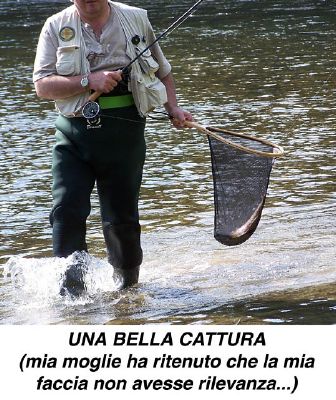 If you travel to Continental Europe you will find magnificent big rivers that host Grayling in abundance. Traun in Austria, Piave in Italy, Soca in Slovenia, Orava in Slovakia and San in Poland are top of the list of any fly angler in search of the “Queen of the Stream”. In optimal conditions they share the same features: wide, low, clear, calm water. To make things even “better” they flow under bright, cloudless and sunny skies almost all year round.
If you travel to Continental Europe you will find magnificent big rivers that host Grayling in abundance. Traun in Austria, Piave in Italy, Soca in Slovenia, Orava in Slovakia and San in Poland are top of the list of any fly angler in search of the “Queen of the Stream”. In optimal conditions they share the same features: wide, low, clear, calm water. To make things even “better” they flow under bright, cloudless and sunny skies almost all year round.
These rivers however, when tackled the right way, offer the ultimate Dry Fly Fishing experience.
POLAND: River SAN
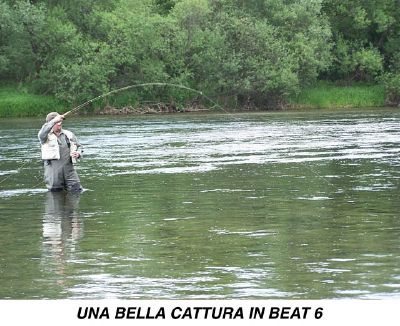 As a newly discovered gem, the San is absolutely the most significant river in Europe nowadays. It is located in the south-east of the Country, near the Ukrainian border, in the stunning Bieszczady Natural Park at the foot of the Carpathian Mountains. The main town is Lesko and the area is a popular holiday destination for wealthy Poles. Plenty of activities can be found in either winter or summer from ski resorts to paragliding fields. All are well managed. The famous “Fly Only-No Kill” section flows from Lake Solina to the conjunction with a stream called Hoczewka and thanks to wise management Grayling are present in their prime and in thousands. Fly Anglers are restricted to 20 per day. Sized up to 4lb, Grayling take the dry fly all year round in normal water levels. Winter is cold and hatches are limited to a couple of hours a day, from Noon to 2pm. Spring and Autumn are best as the weather is pleasant and fish rise all day long. Summer can be very hot, but the magic of the “coup de soir”, those couple of hours fishing at sunset, is priceless.
As a newly discovered gem, the San is absolutely the most significant river in Europe nowadays. It is located in the south-east of the Country, near the Ukrainian border, in the stunning Bieszczady Natural Park at the foot of the Carpathian Mountains. The main town is Lesko and the area is a popular holiday destination for wealthy Poles. Plenty of activities can be found in either winter or summer from ski resorts to paragliding fields. All are well managed. The famous “Fly Only-No Kill” section flows from Lake Solina to the conjunction with a stream called Hoczewka and thanks to wise management Grayling are present in their prime and in thousands. Fly Anglers are restricted to 20 per day. Sized up to 4lb, Grayling take the dry fly all year round in normal water levels. Winter is cold and hatches are limited to a couple of hours a day, from Noon to 2pm. Spring and Autumn are best as the weather is pleasant and fish rise all day long. Summer can be very hot, but the magic of the “coup de soir”, those couple of hours fishing at sunset, is priceless.
The “No Kill” section is divided into 8 beats, each offering diverse fishing scenarios. Of course Grayling is not the only fish. You will find Brownies and Rainbows some of which can go into double figure.
Many used to overcast, breeze and ripply water, might be driven off by the fine Continental weather conditions and the idea of fishing in such a mirror-calm water, on a cloudless, hot and still day might not appeal everybody. Nevertheless, I can assure you it can be awesome. If you like fishing well into summer dusks, at the peak of fish activity, as much as I do, you would plan your polish holiday around June or July.
TACKLE- ROD & LINE
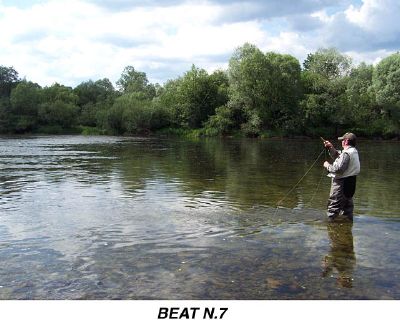 Knee-deep in the middle of the river surrounded by dozens of Grayling rising around, the closest being just three or four meters away: very common, honestly. We target a rising fish and want to be fast, precise and delicate. The fly is to be finely presented a couple of meters above the rise and be retrieved as soon as it is behind the fish. A few seconds in the water. Grayling doesn’t come back to take our fly in the middle of a hatch especially if it drags, inevitably... If she, our “queen of the stream”, doesn’t take then, another cast, and another, and another… until she is persuaded by the genuine look of our fur-dressed hook. Time is what matters though and is also not to be wasted in too many false casts, which are also very annoying to the fish. This is what Dry Fly Fishing is about.
Knee-deep in the middle of the river surrounded by dozens of Grayling rising around, the closest being just three or four meters away: very common, honestly. We target a rising fish and want to be fast, precise and delicate. The fly is to be finely presented a couple of meters above the rise and be retrieved as soon as it is behind the fish. A few seconds in the water. Grayling doesn’t come back to take our fly in the middle of a hatch especially if it drags, inevitably... If she, our “queen of the stream”, doesn’t take then, another cast, and another, and another… until she is persuaded by the genuine look of our fur-dressed hook. Time is what matters though and is also not to be wasted in too many false casts, which are also very annoying to the fish. This is what Dry Fly Fishing is about.
Long rods can’t be fast, heavy lines neither. A whole literature has been written about this topic. Pure Dry Fly Fishing is to be done with 7’ to 8’ rod AFTMA 3 or 4. Anything longer or/and heavier belongs to other piscatorial businesses. As simple as that. Dry Fly rods should be tip crisp action, resulting in very tight loops, fast and precise casting.
Distance, high speed, precision, finesse on flat and shallow water. Here the solution for waters like San’s. Go for a 7’6” AFTMA 4 progressive blank with a honest “tip attitude” like the CTS Affinity X. Forget about the suggested line and load an AFTMA 2/3 DTF. The trick is done. Simple and effective, it gives you light hi-speed action yet extremely delicate presentation. This method is particularly useful in specialised casts like horizontal, curved, snake etc in order to subdue the dragging.
DRY FLY & LEADER
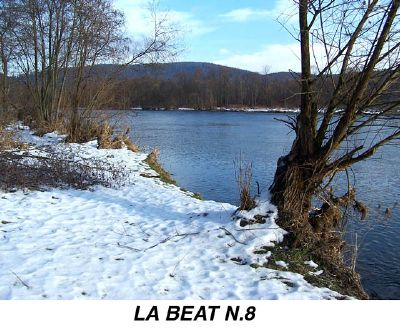 San’s and all Balcan Grayling do not take anything larger than a sparsely dressed dry fly on a size 20 to 28 hook. Best results are achieved all year round with grey CDCs #24. Summer Ephemeridae will copiously hatch in larger sizes especially in the evening, or around intense vegetation, and we can match them with #18 proper imitations.
San’s and all Balcan Grayling do not take anything larger than a sparsely dressed dry fly on a size 20 to 28 hook. Best results are achieved all year round with grey CDCs #24. Summer Ephemeridae will copiously hatch in larger sizes especially in the evening, or around intense vegetation, and we can match them with #18 proper imitations.
I will never stress the point enough of using barbless hooks, not only on the San, but everywhere you can possibly cast a fly. They have better penetration and you won’t loose the fish if handled decently. Again, this is only my personal experience.
Small flies require fine tippets. A #26 Midge will certainly look weird to the eye of these fantastic grayling if it is tied to 4lb breaking strain nylon for the simple reason that it will not “behave” naturally. At this stage it is necessary to think of the leader in terms of thickness rather than breaking strain as the ratio is different from brand to brand.
If we make our own knotted leader we possibly need different grades of stretch and stiffness on the same leader. Butt should be made of stiff material to transmit enough power to the soft tippet to allow the tiny fly to look natural on the water. The taper then should be a good balance between the two. I found RIO materials to be an excellent choice: RIO Saltwater for the butt RIO Max for the taper and RIO Powerflex for the tippet.
As we tackled as previously described, we need a long leader to cope with extra fast hauls. A short leader will in fact splash the water with disastrous results. Anything from 400cm will do the trick. However, provided the fly is properly presented, I never noticed difference in catches between, say, a 350cm leader and a 460cm. It seems that Grayling are rather bothered by the thickness of the tippet that should be no more than 0.10mm in diameter down to 0.08mm in difficult conditions.
Joining the nylon leader to the line with a Cast Connector is best in my opinion, as it does not trap water as the braided loop does and therefore floats better.
HOW TO GET TO THE SAN
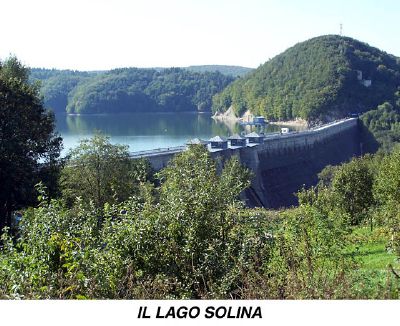 From most European cities you fly straight to Krakow (230km), small, beautiful, historical town that hosts one of the most acclaimed Da Vinci’s paintings, the “Lady with an Ermine”, at the Czartoryski Museum right in town centre. From London it is possible to reach Rzeszow, which is only a 95km drive from the San.
From most European cities you fly straight to Krakow (230km), small, beautiful, historical town that hosts one of the most acclaimed Da Vinci’s paintings, the “Lady with an Ermine”, at the Czartoryski Museum right in town centre. From London it is possible to reach Rzeszow, which is only a 95km drive from the San.
At both airports you can rent a car but with great caution. Get damage insurance or you might be charged for full damage cost even for the tiniest scratch that might happen driving through fishing sites. When you collect the car have the rep with you to thoroughly check it, from previous damages to full petrol tank. Make sure the contract is filled with ALL your requirements and the damage report matches the actual condition. They all seem to be very much accommodating but it is easy to find the final surprise.
On the very last trip I booked through Budget. At the time of rental they did not report all body scratches (curiously leaving unchecked the worse one…) and the petrol tank was not full. The rep said that the car failed to show the full tank and to return it the same way, basically impossible. Moreover, at time of return they confirmed the promised price of their website but I was charged an extra €80 a few days later back home. I made several attempts to email their office at the airport with no answer. Therefore I contacted the main office in USA and the explanation, AFTER 6 WEEKS, was that I was charged for extra insurance related to USA residents, which I did not want as I am European (!), and VAT that definitely did not appear at time of booking through the website. One thing is sure: I will not use this company again!
From Krakow airport take the E40 leading to RZESZOW. Pass TARNOW and at PILZNO follow signposts to JASLO (N73). Here then go to KROSNO, RYMANOW and SANOK on the N28. Once in Sanok follow direction to KROSCIENKO/Ukranian border. In 20 minutes you will be in LESKO. The journey is about 3.5 hours.
ACCOMMODATION AND PERMITS
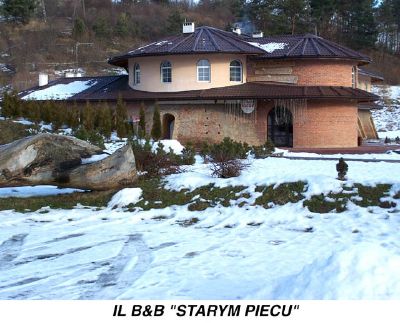 Just before the town there is a roundabout. Keep right passing over the bridge on the San. Drive for about 7km with the river on your left. Soon you will find STARYM PIECU a nice red brick oval building. Once a furnace this could be the strategic accommodation, being so close to all fishing spots. In addition, the good news is that once you are there you can rely upon honest and straightforward services. STARYM PIECU (Tel 0048 13 4689880) is a B&B located in Hoczew, a small village close to Lesko, and is the only accommodation specialised in outdoor activities and of course fly-fishing. It is a family run business and Margaret, the owner, speaks English, German and Italian (Mobile: 0048 509317544). Cuisine is fantastic, with its selection of traditional tasty and rich dishes and very well done Italian food. You will find an excellent wine list from all over the world but with special regard to Italy and France. Not to be missed is the local honey-vodka and the superb úliwowica, beautifully made of distilled plum. They can book your fishing tickets weeks in advance and have the guide waiting for you in the morning if required. Your permit will anyway be with you at the required time. They please the whole family with excursions, extreme sports, gliding, paintball, rafting and so on. They can collect you at Rzeszow airport, take you to fishing spots or you can rent one of their SUV when needed. The bonus about this B&B is that it is right in front of one of the best beats of the San, where fish rise all day long. You can visit their website here: www.hoczew.pl (unfortunately still in Polish only)
Just before the town there is a roundabout. Keep right passing over the bridge on the San. Drive for about 7km with the river on your left. Soon you will find STARYM PIECU a nice red brick oval building. Once a furnace this could be the strategic accommodation, being so close to all fishing spots. In addition, the good news is that once you are there you can rely upon honest and straightforward services. STARYM PIECU (Tel 0048 13 4689880) is a B&B located in Hoczew, a small village close to Lesko, and is the only accommodation specialised in outdoor activities and of course fly-fishing. It is a family run business and Margaret, the owner, speaks English, German and Italian (Mobile: 0048 509317544). Cuisine is fantastic, with its selection of traditional tasty and rich dishes and very well done Italian food. You will find an excellent wine list from all over the world but with special regard to Italy and France. Not to be missed is the local honey-vodka and the superb úliwowica, beautifully made of distilled plum. They can book your fishing tickets weeks in advance and have the guide waiting for you in the morning if required. Your permit will anyway be with you at the required time. They please the whole family with excursions, extreme sports, gliding, paintball, rafting and so on. They can collect you at Rzeszow airport, take you to fishing spots or you can rent one of their SUV when needed. The bonus about this B&B is that it is right in front of one of the best beats of the San, where fish rise all day long. You can visit their website here: www.hoczew.pl (unfortunately still in Polish only)
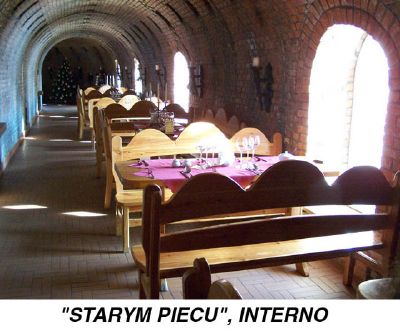 One-day permit for the “No-Kill” section is at 70zù, about €17 or £13 but fishing can be marvellous everywhere and for only a few coins.
One-day permit for the “No-Kill” section is at 70zù, about €17 or £13 but fishing can be marvellous everywhere and for only a few coins.

